Il ricamo in rosso ha una grande storia che risale alla fine del XIX secolo. It is a simple style of “;art needlework”; in cui il disegno è delineato su uno sfondo bianco o bianco sporco con un colore contrastante di filo. Al giorno d'oggi, Questo punto è comunemente chiamato incollaggio o cucitura del contorno.
Quando questo stile è diventato popolare, rosso filo era il colore più semplice da ottenere. Era anche colorato, meaning it would not wash or “;bleed”; sul tessuto bianco. La Turchia Red è il nome di una tintura naturale che è diventata popolare in Nord America a metà del diciannovesimo secolo. Altri coloranti sono diventati disponibili in giro 1875 e ha fornito una gamma più completa di colori, però, svanivano. Il filo rosso turco era più costoso ma ne valeva la pena per il suo colore. Da 1910 a 1930, un filo tinto di blu era popolare. Oggi, continuiamo a usare il filo rosso con questo stile di ricamo, in quanto il colore rosso contrasta bene con lo sfondo chiaro.
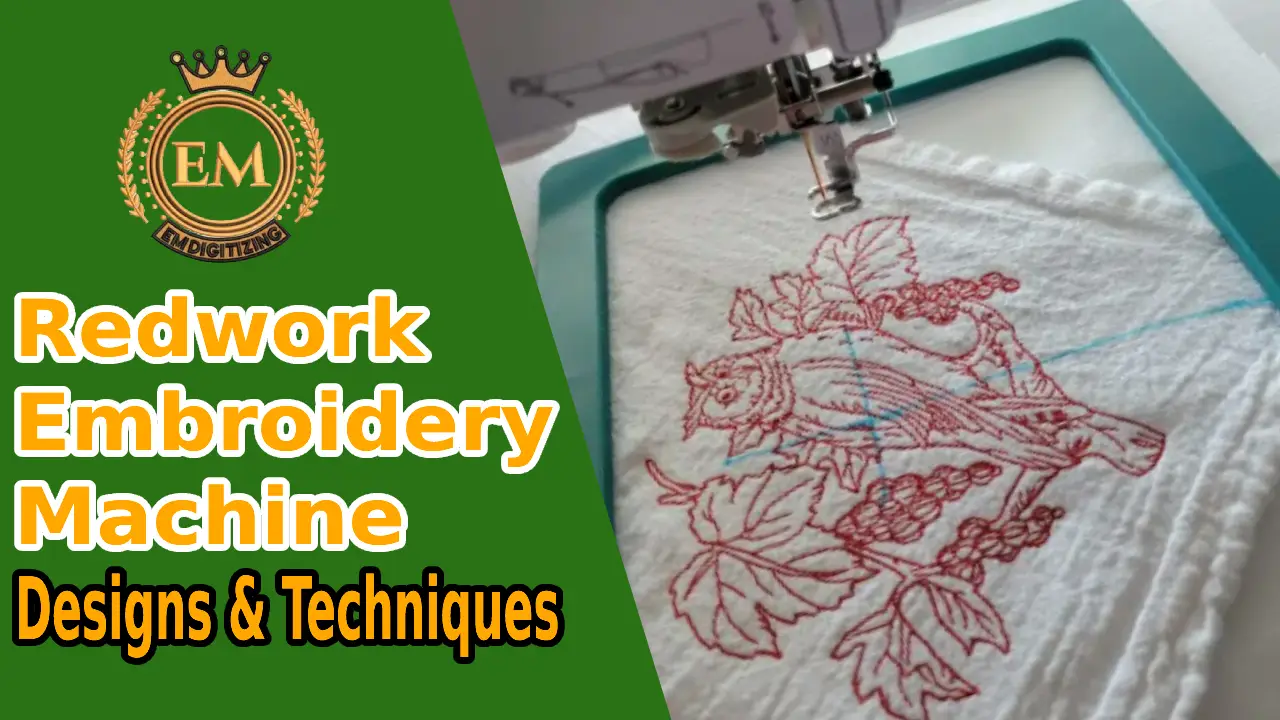
Servizi di digitalizzazione del ricamo
Cos'è il ricamo Redwork?
Il ricamo Redwork è un'antica forma di ricamo che può essere fatta risalire all'Europa orientale all'inizio del XIX secolo.
Il filo era tinto di rosso ed è stato il primo filo di cotone colorato utilizzato nel ricamo, prima di questo colorato filo era fatto di seta e poteva essere usato solo dai ricchi.
Questo tipo di ricamo era popolare perché era necessario meno filo per creare il ricamo disegno del ricamo. È stato anche molto veloce sviluppare un design. Oltre a questi fattori, il basso costo fece sì che i ricami in rosso si diffondessero rapidamente in altre parti del mondo.
Quali punti usi nel ricamo Redwork?
Il ricamo Redwork utilizza pochissimi punti, il che lo rende ottimo per gli studenti di ricamo. Redwork disegni da ricamo sono delineati con poche o nessuna area riempita. Perciò, gli schemi di ricamo redwork gratuiti presenti in questa pagina sono facili e veloci da completare!
Il punto principale utilizzato nel ricamo in rosso è il punto gambo, è noto anche come contorno o punto indietro. Come rifacimento disegni da ricamo sono delineati, questo è il punto che viene utilizzato più spesso.
Altri punti includono un punto pieno, che viene utilizzato per riempire piccoli spazi in un disegno. Ci sono anche cuciture divise, e i nodi francesi vengono utilizzati per aggiungere piccoli dettagli ai ricami in rosso. Questa pagina è piena di risorse per apprendere i punti base utilizzati nel ricamo in rosso!
Tecnica di ricamo Redwork
Basta con la lezione di storia! Come facciamo effettivamente a rielaborare?? Per la sua semplicità, redwork è un ottimo punto di partenza per i nuovi produttori di aghi e i giovani artisti degli aghi. I cinque tipi di punti sono facili da imparare, e segui semplicemente le linee del motivo stampato.
- UN Punto corrente immerge su e giù per il tessuto, creando una linea come una trapunta. L'obiettivo è posizionare punti equidistanti per dimostrare abilità.
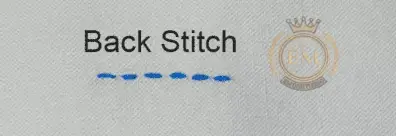 UN Punto indietro è una serie di punti pari, di solito funzionava da destra a sinistra, partendo dall'ultimo punto e poi indietro attraverso l'apertura del punto precedente.
UN Punto indietro è una serie di punti pari, di solito funzionava da destra a sinistra, partendo dall'ultimo punto e poi indietro attraverso l'apertura del punto precedente.
- Il Punto stelo sta lavorando da sinistra a destra. Ancora, con punti pari, questi si annidano l'uno contro l'altro per creare una linea solida. Il filo è stato posizionato sotto l'ago.

- Il Punto contorno è simile al punto erba, ma il filo è posizionato sopra l'ago.
- Il Punto Kensington è quello che mia mamma chiamerebbe un punto diviso. Da quando è arrivato il filo interdentale 6 fili, Puoi usare 2, 4, o 6 fili. Il filo si rompe, creating little hearts or “;eyes of the needle.”; Questo punto è stato il più difficile da padroneggiare perché ho dovuto contare le strisce, Ma diventa più facile.
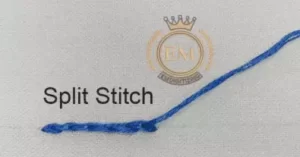
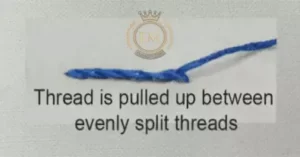
Modelli di ricamo rossa
La maggior parte dei motivi erano molto facili da cucire. Animali, fiori, giocattoli, E i bambini sono tutti temi popolari. Anche le foto di edifici famosi e persone sono stati cuciti, così come libri di fiabe vivaci e personaggi della rima della scuola materna. Gli editori di riviste hanno fornito campioni per promuovere gli abbonamenti. Man mano che l'attrezzatura divenne più prontamente disponibile, A volte offrivano kit. Wealthy women used the images as models in children’;S libri da colorare e altre pubblicità.
Stampare il tessuto - trasferimento di disegni su stoffa - è diventato una fonte di reddito per molte donne. Alcuni produttori hanno assunto timbri professionisti, e alcune donne svolgevano questo lavoro secondario da casa. In giro 1870, i trasferimenti sono stati sviluppati su ferro. Usare un ferro caldo era un modo semplice per applicare il disegno al tessuto.
Sono stati venduti quadrati prestampati pronti per il ricamo. Il loro valore reale è di circa un centesimo, so they were commonly called “;penny squares”;. Questi quadrati venivano ricamati e cuciti insieme per formare copriletti o trapunte. Inoltre, ai bambini sono stati dati dei penny quadrati per imparare e praticare il ricamo a mano.
Disegni di ricamo a macchina Redwork
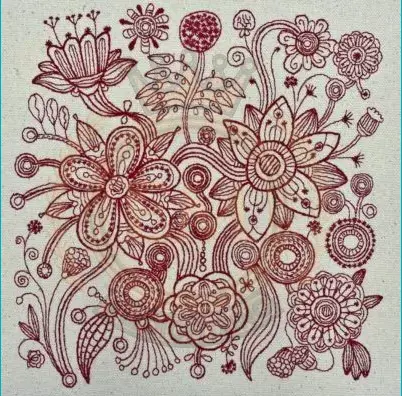
Come per qualsiasi tecnica di ricamo, non tutti i disegni da ricamo sono uguali. Quando usi i disegni sul tuo macchina da ricamo, vuoi assicurarti che funzionino senza intoppi e non rovinino il tuo capo.
Ti consigliamo di utilizzare sempre un disegno del ricamo che sai ti darà i migliori risultati. Emdigitalizzazione is sure to always give you the best results as our redwork designs are of the best quality and personally digitized by the world’;S Digitalizzatore più acclamato.
Con centinaia di disegni da ricamo rossa da scegliere, we’;re sure there’;S un design da ricamo rosso per soddisfare le tue esigenze creative. Puoi vedere molti dei nostri emdigitizzanti Disegni da ricamo di cliccando qui.
Digitalizzazione dei design di ricami per macchine per redwork personalizzate
Software per ricamo da schiusa ha un'impostazione rossa progettata per dare esattamente due passaggi per creare un punto uniforme di redwork tradizionale. Onestamente, it’;s avvincente, e fornisce la capacità, con pratica, a digitalizzare Lettere a mano e riprodurre disegni.
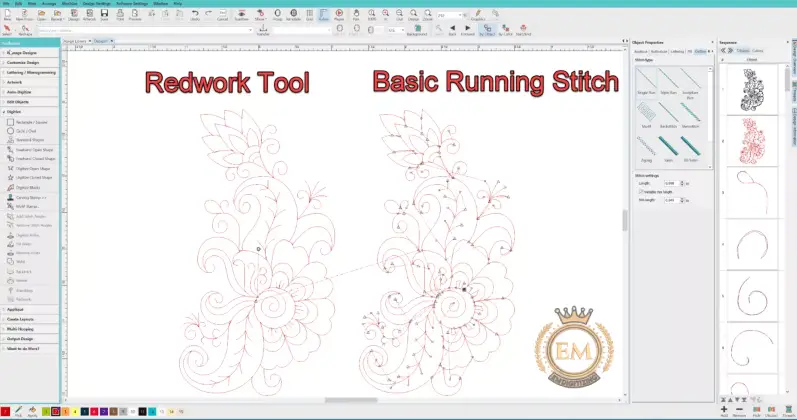
Sembra troppo bello per essere vero? It’;s no, Ma richiede che tu sia un po 'un detective. Il redwork deve essere sapientemente rotto in modo che le linee fluiscano dall'una all'altra.
Quando si guarda uno schema, Devi capirlo prima di iniziare a saltare e fare clic. Scopri il tuo flusso e lavora da un inizio logico alla fine. Dovrai cucire i punti di inizio e arresto (Green Plus e Red Diamond) da persona a persona a lavorare come brigata di secchio.
Idealmente, you’;LL digitalizzare L'intero motivo come un passaggio senza finiture, but if you can’;t (say you’;RE Lavorare su un quadrato trapuntato con quattro motivi ripetuti), Quindi assicurati di iniziare e fermare ogni parte del flusso del motivo.
Conclusione
Silhouettes di bambini o immagini attentamente digitalizzate di persone sono eccellenti, anche se impegnativo, soggetti. Nello spirito del redwork tradizionale, Usa il rosso Turchia, blu, viola, o verde, E lasciati creati creativi con un solo colore.
Now if you want to create redwork but don’;voglio digitalizzare i tuoi design, don’;non dimenticare di dare un'occhiata EmdigitalizzazioneLa vasta collezione di redwork standard disegni da ricamo di cliccando qui.
Redwork or linework is a simple form of “;art needlework”; in cui il contorno di un design è cucito su tessuto bianco o bianco in filo rosso o di colore diverso, ma di solito è un design a colori. . A partire dal XIX secolo, Redwork oggi è comunemente chiamato incollaggio o cucitura del contorno.
Il punto principale utilizzato in Redwork è il punto di riferimento o il punto del contorno, Precedentemente noto come Kensington Stitch. Redwork era una forma introduttiva comune di ricami insegnati ai bambini del XIX e XX secolo.
I disegni rossa erano disegni di linea di base e piuttosto stravaganti dei bambini, uccelli, fiori, una pompa dell'acqua, e altri oggetti trovati in tutto la casa in quel momento.
Trapunte di redwork, o trapunte costituite da punti di ricamo a contorno in filo rosso, erano popolari come trapunte di raccolta fondi tra la fine del 1800 e l'inizio del 1900.
A causa della diffusa popolarità dei redwork oggi, centinaia, Forse migliaia, di design vintage sono stati riprodotti per l'uso. Redwork divenne popolare alla fine del 1870. Il nome deriva dal thread di ricamo noto come Turchia Red.
